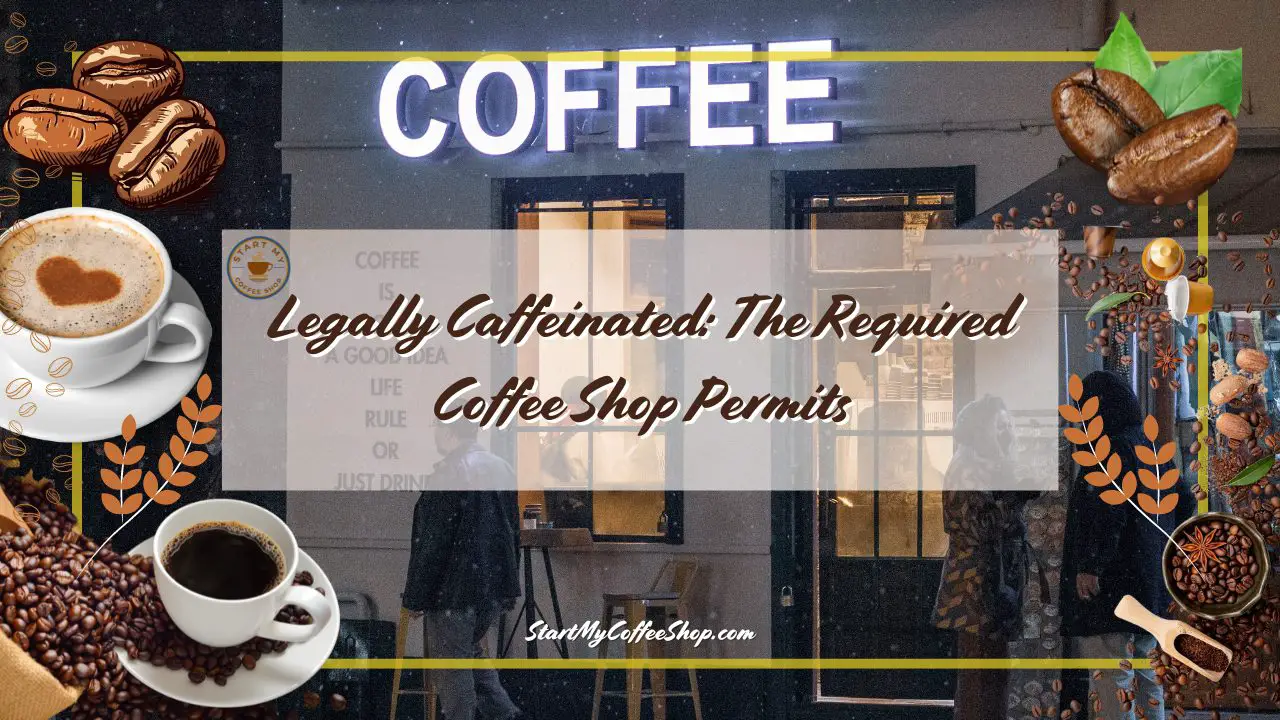It was exciting to open my coffee shop, but one of the hardest things I had to do was choose the right spot. This decision had a big effect on my coffee shop’s general success, affecting foot traffic, visibility, and profits. I’m going to share some important things I learned along the way that will help you choose the best place for your coffee shop.
According to my research, the optimal approach to franchise initiation involves understanding target markets, assessing foot traffic, evaluating accessibility, considering surrounding businesses, analyzing costs, and seeking professional guidance.
- High foot traffic: Look for locations with high foot traffic, such as busy downtown areas, shopping centers, or near transportation hubs, to attract potential customers passing by.
- Visibility and accessibility: Choose a location with good visibility and easy accessibility, preferably with ample parking or close to public transportation, to make it convenient for customers to visit your coffee shop.
- Target demographic: Consider the demographics of the area, including age, income level, and lifestyle preferences, to ensure your coffee shop caters to the needs and preferences of the local community.
- Competition analysis: Research existing coffee shops and cafes in the area to assess competition levels and identify any gaps or opportunities for differentiation in the market.
- Cost considerations: Evaluate the cost of renting or leasing the space, taking into account factors such as rent, utilities, and taxes, to ensure it aligns with your budget and projected revenue.
Understand My Target Market
Before I started looking for sites, I made sure I had a good idea of who I wanted to reach. I asked myself things like, “Who do I want to attract?” Tourists, students, young workers, or families? Knowing my audience helped me find places where they liked to hang out, which narrowed down my search for locations.
I also looked closely at my rivals in possible areas. Were my ideal customers already catered to by a lot of coffee shops? This helped me figure out if there was still room for one more player or if I needed to look for another place.
Assess Foot Traffic and Visibility
Foot movement is very important for any store, so I looked for places where a lot of people walk around. My top choices were busy shopping streets, business districts, or places close to public transportation hubs. Visibility was also very important. I wanted people to be able to see my coffee shop from the street.
It was also important to think about the nearby companies and attractions. Were there well-known shops, offices, or tourist spots close by? These might help get people to come into my coffee shop. Some places may charge more to rent because they are busier, but the extra publicity could mean more sales.
Evaluate Accessibility and Parking
Accessibility was a big part of how I made my choice. People could walk, ride a bike, drive, or take the bus to get to my coffee shop. Because my target market included workers and drivers, I made sure there were easy ways to park.
I carefully checked to see if there were enough parking spots on the street, in parking garages, or dedicated lots near the possible sites. Customers might not come if there aren’t enough parking spots, so I chose places with lots of parking spots.
Consider Surrounding Businesses and Amenities
I thought about the shops and services in the area that might work well with my coffee shop. I wanted to be close to other businesses that my target market would be interested in, like gyms, bookstores, or coworking places. I could get more people to know about and visit my coffee shop by working with nearby businesses on agreements or cross-promotions.
I also cared about how the neighborhood felt in general. Was it loud and busy, or was it calm and peaceful? To get and keep people, I wanted the atmosphere of my coffee shop to fit in with the neighborhood.
Analyze Costs and Budget
It was very important for me to pick a place that fit my budget. Not only did I carefully look at the monthly rent, but I also looked at other costs like taxes, insurance, utilities, and repairs.
A prime site might cost more, but it could also bring in more customers and make you more money. However, I had to weigh the possible benefits against the financial risks and make sure that the location I picked fit with my long-term financial goals and budget.
Seek Professional Guidance
Lastly, I didn’t think twice about getting help from a professional when I was looking for the right place for my coffee shop. Hiring a site scout or talking to a real estate agent who specializes in commercial properties helped me find the best deals on lease terms.
I also got feedback from teachers, experts in the field, and other coffee shop owners. Their ideas and advice helped me see things from different angles, which led to better choices.
Pros
- Increased Visibility and Foot Traffic: Selecting the right location can significantly boost your coffee shop’s visibility and attract more foot traffic. A prime spot in a bustling area can expose your business to a larger audience, increasing the chances of attracting new customers and building a loyal clientele base.
- Enhanced Brand Image: Choosing a strategic location can help enhance your coffee shop’s brand image and reputation. A well-chosen location in a trendy or affluent neighborhood can convey a sense of quality and exclusivity to potential customers, elevating your brand above competitors and fostering positive perceptions among patrons.
- Improved Profitability: Opting for a location with high foot traffic and strong demand for coffee can lead to increased sales and profitability. A bustling area with plenty of potential customers can generate higher revenue streams, offsetting operational costs and ultimately contributing to the long-term success and sustainability of your coffee shop.
Cons
- Higher Rent and Operating Costs: Prime locations often come with higher rent and operating costs, which can eat into your profit margins. Balancing the benefits of increased visibility and foot traffic with the financial implications of leasing in a desirable area is crucial to ensuring the profitability and viability of your coffee shop.
- Increased Competition: Choosing a popular location may also mean facing stiff competition from existing coffee shops and other food and beverage establishments. Standing out in a saturated market requires offering unique products, exceptional service, and compelling brand identity to attract and retain customers amidst competition.
- Limited Flexibility and Accessibility: Some prime locations may come with limitations in terms of space, layout, or accessibility. Limited parking, restricted operating hours, or zoning restrictions can pose challenges for your coffee shop’s operations and may require creative solutions or compromises to overcome. It’s essential to carefully weigh these factors when evaluating potential locations to ensure they align with your business needs and objectives.
Conclusion
I’ve learned that picking the right place for your coffee shop is very important for its success. I’ve learned from my own experience that if you follow these tips, you can make this choice with confidence. Knowing your target market, checking the foot traffic and visibility, making sure it’s easy to get to and park, looking at the nearby businesses and amenities, checking the costs and budget, and getting professional help have all been important parts of my site selection process.
Doing a lot of research and giving things a lot of thought are very important if you want to make a good choice that fits with your business’s goals and vision. I’ve seen personally how my coffee shop can do well in the right place, bringing in a steady stream of customers and becoming an important part of the community. So, as you start the exciting process of making your coffee shop dreams come true, I urge you to take your time, look at all of your options, and trust your gut.
To learn more on how to start your coffee shop, check out my startup documents here.
Disclaimer: The information provided by StartMyCoffeeShop.com (“The Site”) is for general informational purposes only. All information on the Site is provided in good faith. However, we make no representation or warranty of any kind, express or implied, regarding the accuracy, adequacy, validity, reliability, availability, or completeness of any information on the Site. Under no circumstance shall we have any liability to you for any loss or damage of any kind incurred as a result of the use of the Site or Reliance on any information provided on the Site. Your use of the Site and reliance on any information on the Site is solely at your own risk. This blog post is for educational purposes only and does not constitute legal advice. Please consult a legal expert to address your specific needs. Terms and Conditions.

Hi! I’m Shawn Chun
My adventure in coffee began when I first launched my first coffee shop back in the early 2000s. I had to figure out so many things on my own and to make it worse within 2 years of opening two large corporate coffee chains moved in just blocks away from me!
As I saw smaller and even some larger coffee shops in the neighborhood slowly lose customers to these giant coffee chains and slowly close up shop, I knew that I had to start getting creative…or go out of business.
I (like you may be) knew the coffee industry well. I could make the best latte art around and the foam on my caps was the fluffiest you have ever seen. I even had the best state-of-the-art 2 group digital Nuova Simonelli machine money could buy. But I knew that these things alone would not be enough to lure customers away from the name brand established coffee shops.
Eventually, through lots of trial and error as well as perseverance and creativity I did find a way to not only survive but also thrive in the coffee/espresso industry even while those corporate coffee chains stayed put. During those years I learned to adapt and always faced new challenges. It was not always easy, however, in the end, I was the sole survivor independent coffee shop within a 10-mile radius of my location. Just two corporate coffee chains and I were left after that year. All told the corporate coffee chains took down over 15 small independent coffee shops and kiosks and I was the last one standing and thriving.
Along the years I meet others with the same passion for coffee and I quickly learned that it is not only “how good a barista is” that makes a coffee shop successful, but the business side of coffee as well.
Hence why I started this website you are on now. To provide the tools and resources for up and coming coffee shop owners to gain that vital insight and knowledge on how to start a coffee shop successfully.
Stick around, browse through my helpful blog and resources and enjoy your stay! With lots of LATTE LOVE!
Shawn






